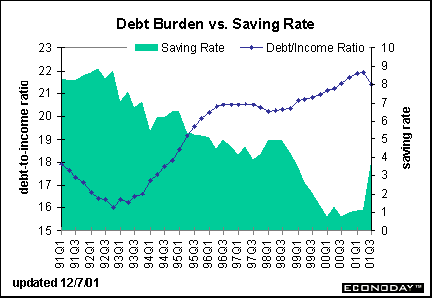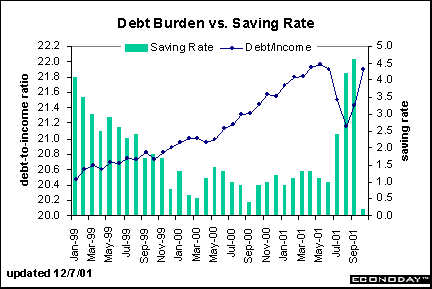
Long Term Perspective
Debt burdens are at historically high levels while the savings rate is at historical lows. In periods of economic uncertainty, or during recessions, consumers tend to add to savings and diminish debt burdens.

Short Term Perspective
The saving rate plunged to 0.2 percent in October because zero percent financing offers caused motor vehicle sales (and durable goods) to spike in October. Since the entire purchase of the car is counted in the month of the sale, it looks as though consumers used up all their savings. Actually, this is a statistical anomaly. The personal saving rate will likely return to levels seen early in 2001 over the next couple of months. The debt-to-income ratio is back to its trend after being depressed for a couple of months because of higher disposable income levels coming from tax rebates.



Real GDP vs. Final Sales •
Real Consumer Spending vs. Real Income •
Debt Burden vs. Savings Rate

Business Fixed Investment vs. Net Cash Flow
•
New Orders •
Housing Starts vs. Mortgage Rates

Merchandise Exports vs. Trade Weighted Dollar •
Merchandise Imports vs. Trade Weighted Dollar
|